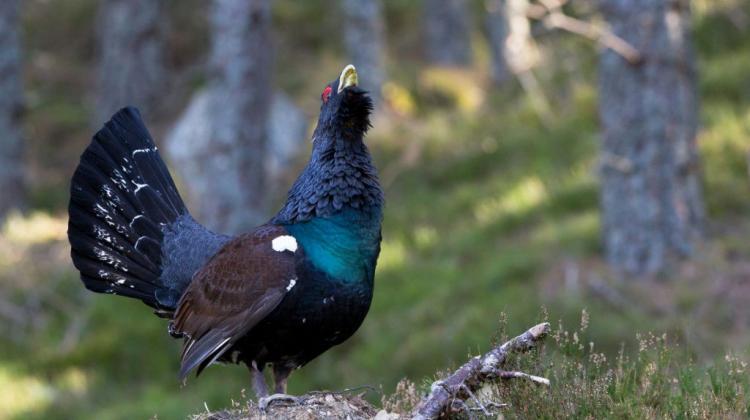Protection of capercaillie in the Augustów Forest
 Photo: Fotolia
Photo: Fotolia
What territories capercaillies occupy, how they move, how they sense each other - those and more are the questions of foresters who implement a program to restore the population of these birds in the Augustów Forest (Podlasie).
As part of the project, a conservative capercaillie breeding has been established in Forest District Głęboki Bród, and birds from Russia have been brought to the forest. Dozens of birds are monitored with special telemetry transmitters that they carry on their backs.
The capercaillie is the largest galliforme bird in Europe - emphasize the foresters. In Poland it is protected, it belongs to the species threatened with extinction. The numbers of these birds continue to drop. "Even 100 years ago in Poland there were about 2 thousand - 2.5 thousand of these birds. Currently, the total population size is only 350-500 birds" - reported the spokesman of the Regional Directorate of State Forests in Białystok, Jarosław Krawczyk. He also cited data according to which in 1997 it was estimated that there were approx. 60 capercaillies in the Augustów Forest, and in 2013 only 30-35.
Capercaillies are bred in a semi-free breeding centre in the Augustów Forest. Głęboki Bród district forester Tadeusz Wilczyński told PAP that it means that the female stays in an aviary, and the young birds can freely go outside from the aviary. "This way, they learn to respond to threats. They grow up in the woods, then they are released outside" - emphasised Wilczyński.
The breeding centre currently has 11 capercaillies. Wilczyński said that capercaillies are as diverse as humans. "Some are fearful, others very bold, there are freaks, others are very curious" - he said. There is a bird number 007 in the breeding centre, which - because of the association of the number with agent James Bond - got the name Bond, and behaves like an agent. "He is outgoing, shows itself to caretakers" - said Wilczyński. In general, capercaillies are sensitive to the human presence, they avoid people, like to live in hiding. That is why foresters believe that, in general, there are more capercaillies than estimated.
Capercaillie population in the Augustów Forest was also strengthened by 40 birds brought from Russia to expand the gene pool and minimize genetic similarity in the population. This proved to be a success. The birds made their home in the wilderness. "They cope magnificently" - said Wilczyński. The forester added that after these birds were brought to the Augustów Forest, they were subject to compulsory quarantine in cages. Foresters very surprised when the next day after the arrival of birds, on the cages they found 8 birds that came from the wilderness. "We did not expect that" - said Wilczyński. It\'s one of the mysteries, to which they are looking for answers.
Previous observations of capercaillies showed, for example, that these birds "make increasingly big circles" from places where they were released. It has also been observed, for example, that a capercaillie can cover a distance of 8-10 km in one direction and unerringly find the courtship site. We also know that capercaillies feel best in a 50-80 years old stand.
The greatest enemies of the capercaillie are predators: fox and goshawk. This year, a hawk strangled 6 females that wore transmitters. "Females are easier to hunt because they are smaller. Males are not subject to such danger" - said Wilczyński.
In addition to the Augustów Forest, the capercaillie conservation project it is also implemented in Ruszów Forest District in Lower Silesia. The project is co-financed by the EU Life program and the National Fund for Environmental Protection and Water Management. The amount of 8 million zlotys (nearly 2 million euros) has been allocated to the activities in the Augustów Forest.
PAP - Science and Scholarship in Poland
kow/ mhr/ zan/
tr. RL
Przed dodaniem komentarza prosimy o zapoznanie z Regulaminem forum serwisu Nauka w Polsce.
















